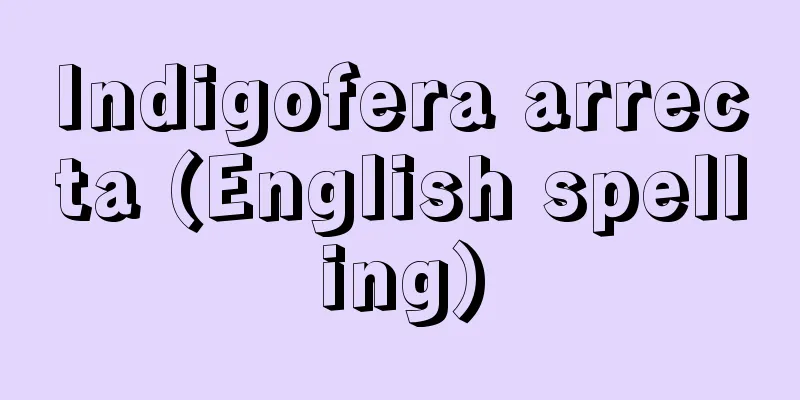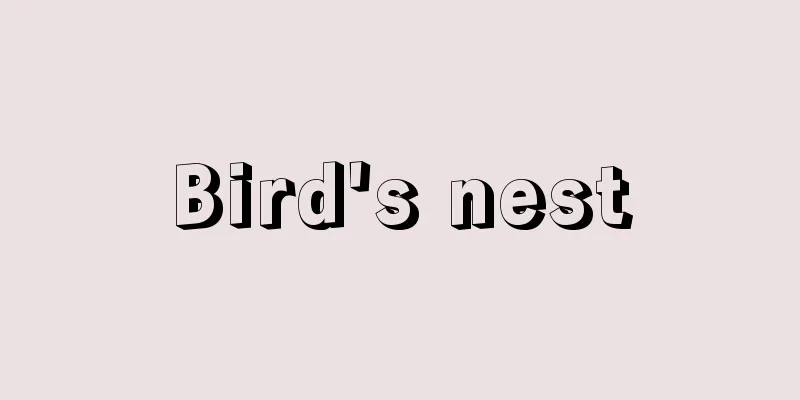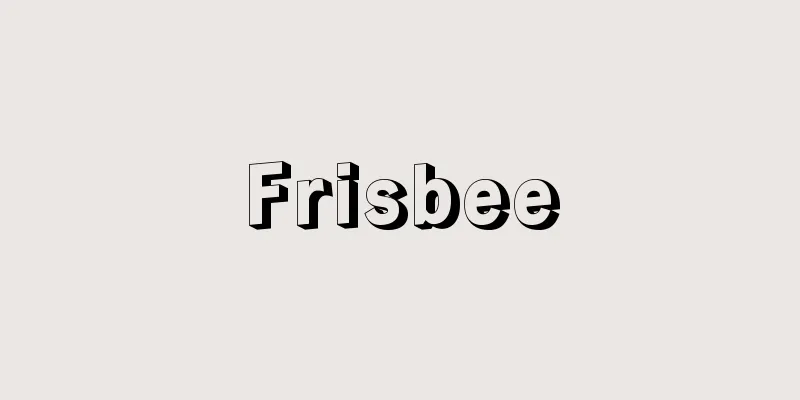Family crest - Montsuki

|
This is mainly a long kimono or haori with a family crest (jomon). It is also called monfuku. It is used as formal attire. In the past, family crests were also attached to yutan (a cloth used to cover a chest of drawers) and fukusa (a cloth used to wrap a ... Girls wear two layers of black crepe dyed with five crests and a pattern on the hem. The undergarment is white habutae, but recently this has been omitted and it is common to wear a tsukehiki. For misfortunes, a plain black is worn, and in summer, plain silk is used. For boys turning five years old, the celebratory attire is a pair of habutae dyed with five crests and a noshime pattern in black or brown (dark blue) and a haori, with hakama attached. [Kazuko Okano] Types of formal attireFor both men and women, five crests are the most formal attire, three crests are next, and one crest is informal attire. A back crest centered on the back stitching, sleeve crests on the left and right back sleeves, and embracing crests on both sides of the chest are five crests, a back crest and sleeve crest are three crests, and a back crest alone is one crest. Five crests are dyed and not sewn as informal attire. For men's semi-formal attire, plain kimono such as omeshi, tsumugi, and ro, and plain black haori, are dyed with three crests or sewn with one crest. For women, plain long kimono such as crested rinzu are worn with three crests, or one crest dyed or sewn. For furisode and homongi, three crests or one crest were worn, but these are no longer worn more often these days. For black haori, three crests or one crest are dyed, or one crest is sewn with one crest. [Kazuko Okano] Types of crestsFor dyed crests, the family crest is dyed white when custom-made white fabric (kiji) is dyed, and then thin lines are drawn in with ink. This is called crest overpainting. Ready-made crested clothing, both black montsuki and colored tomesode, are kokumochi (stone-holding kimono), on which the crest is painted. Ishimochi is limited to crests with rings. For the first formal wear, the front crest (hinata crest, yomon) is white-flecked. In contrast, ura-mon (kage-mon) is a crest drawn with thin outlines, and is used as casual wear by women and performers involved in traditional performing arts. There are tain, chuin, and hon-in. Hon-in is drawn with the thinnest lines. Entertainers prefer the itowana nozoki, which shows the crest on the lower half of a thin ring. A kaemon (female crest) is a crest used by former samurai for informal ninja outings in addition to their family crest. It may be a gentler version of a strong family crest, a circle surrounding a circle may be removed, or the crest of the family of origin may be used instead of the family of the husband. Date crests differ from family crests in that they are embroidered or painted in a large, pictorial style, and were used by dandies, gangsters, and actors to show off their elegance. Kaga crests can be as large as 5 centimeters in diameter, and are elegantly painted or embroidered in the Yuzen style, and are used on children's birth clothes. Sewn crests are embroidered with colored, gold, or silver threads, and are more informal than dyed crests. Examples include suga stitching, popped stitching, accordion stitching, tie-dyed stitching, and woven stitching. Worimon is a type of crest that is woven into a fabric, and was used by feudal lords and high-ranking samurai in the Edo period on their Noshime kosode (short sleeved sleeves). A special type is the Hiyokumon, which has the family crests of a man and woman in love overlapping each other with half of the crest shifted, and is used today on wedding invitations, wedding favors, and furnishings. [Kazuko Okano] How to attach the crest and its sizeThe back crest is placed 5.5 to 6 cm below the collar line, the sleeve crest 7.5 cm below the sleeve top, and the hugging crest 15 cm below the shoulder top. The size of the crest has changed over the years, but currently it is small, at 3.8 cm (one sun in whale shaku) for men and 2.1 cm (5 bu 5 rin) for women. Cut-attached crests (pasted crests) are used when there is no stone mochi for re-dyeing, or when a customer requests a family crest to be attached to a rented costume. The crest is drawn on cloth of the same texture and pasted in the designated place, and then sewn finely so as not to stand out. [Kazuko Okano] [Reference] |©Shogakukan "> Type of crest (dye-removed crest) ©Shogakukan "> Type of crest (stitched crest) Source: Shogakukan Encyclopedia Nipponica About Encyclopedia Nipponica Information | Legend |
|
主として長着や羽織に家紋(定紋(じょうもん))をつけたもの。紋服ともいう。礼装として用いる。かつては、たんす、長持などの油単(ゆたん)や袱紗(ふくさ)などにも家紋をつけることが行われた。古くは公家(くげ)、武家社会に限って着用されたが、江戸時代中期になると、財力を蓄えた富裕な町人、歌舞伎(かぶき)役者などにもしだいに広がった。一般に礼服として定まったのは、明治維新後に裃(かみしも)が廃止されてからである。男子は黒羽二重(くろはぶたえ)染抜き五つ紋付の羽織と対(つい)の長着に、仙台平(せんだいひら)の袴(はかま)が正装である。夏は平絽(ひらろ)で、吉凶とも同じ。女子は黒縮緬(ちりめん)染抜き五つ紋付裾(すそ)模様の二枚襲(かさね)。下着は白羽二重であるが、最近はこれを略し、付け比翼が一般的である。凶事には黒無地とし、夏は平絽を用いる。男児の5歳の祝い着には、黒、褐色(かちいろ)(濃紺)などの羽二重染抜き五つ紋付熨斗目(のしめ)模様の長着と羽織を対で着て、袴をつける。 [岡野和子] 紋服の種類五つ紋は男女とも第一礼装で、三つ紋はこれに次ぎ、一つ紋は略装となる。背縫いを中心につけた背紋、左右後ろ袖(そで)の袖紋と、両胸の抱き紋をつけたものが五つ紋、背紋と袖紋が三つ紋、背紋だけのものが一つ紋である。五つ紋は染抜きにし、略装となる縫い紋にはしない。男子略礼装としてのお召、紬(つむぎ)、絽などの無地の対や、黒無地の羽織は染抜き三つ紋か、一つ紋の縫い紋にする。女子の場合は、紋綸子(りんず)などの無地の長着に三つ紋、一つ紋の染抜きまたは縫い紋をつける。振袖、訪問着には三つ紋か一つ紋をつけたが、最近はつけないことが多くなっている。黒羽織は三つ紋か一つ紋の染抜きにするか、一つ紋の縫い紋とする。 [岡野和子] 紋の種類染抜き紋は、あつらえの白生地(きじ)を染めるときに家紋を白く染め抜いて、細い線を墨で描く。これを紋章上絵描きという。既製品の紋服は、黒紋付、色留袖とも石持(こくもち)になっていて、これに紋描きをする。石持は輪のついた紋に限られる。第一礼装は白あげの表紋(日向(ひなた)紋、陽紋)にする。裏紋(陰(かげ)紋)はこれと反対に、細い輪郭線で紋を描くもので、略装として女性や伝統芸能に携わる芸能人が用いる。太陰、中陰、本陰がある。本陰はもっとも細い線で表したもの。細輪の中の下半分に紋を表した糸輪のぞきは芸能人が好んで使う。替え紋(女紋)は、もと武家が略式の忍びの外出に家紋のほかに用いた紋のことで、強い感じの家紋をやさしく変えたり、丸輪の囲みを輪なしにしたり、婚家の紋でなく、生家の紋を用いたりすることもある。伊達(だて)紋は家紋と異なり、絵画風に大柄に刺しゅうや描き絵で表したもので、伊達者、侠客(きょうかく)、役者などが粋(いき)がって用いた。加賀紋は直径5センチメートルぐらいの大きさのものもあり、友禅風に華やかに優雅にかいたり、刺しゅうをしたりしたもので、子供の産着などに用いる。縫い紋は色糸、金糸、銀糸で刺しゅうして紋を表したもので、染抜き紋より略式となる。菅(すが)縫い、けし縫い、蛇腹(じゃばら)縫い、絞り縫い、織り縫いなどがある。織り紋は織りで紋を表したもので、江戸時代の大名、高級武士などが、熨斗目(のしめ)小袖などにつけたものである。特殊なものに比翼紋といって、相愛の男女の家紋を半分ずらして重ねたものがあり、今日では婚礼の披露の招待状、引出物、調度につけたりする。 [岡野和子] 紋の付け方・大きさ背紋は衿(えり)付け線より5.5~6センチメートル、袖紋は袖山から7.5センチメートル、抱き紋は肩山から15センチメートル下がったところにつける。紋の大きさは時代により変化しているが、現在は男物は3.8センチメートル(鯨尺で一寸)、女物は2.1センチメートル(5分5厘)と小さくなっている。切り付け紋(貼(は)り付け紋)は、染め直しで石持のない場合とか、貸衣装に客の注文で家紋をつけるときに使用する。同地質の布に紋を描き、所定のところに貼り付け、目だたないように細かくかがる。 [岡野和子] [参照項目] |©Shogakukan"> 紋の種類(染抜き紋) ©Shogakukan"> 紋の種類(縫い紋) 出典 小学館 日本大百科全書(ニッポニカ)日本大百科全書(ニッポニカ)について 情報 | 凡例 |
Recommend
Accidens
…The original meaning of chance is the even numbe...
Châtelain (English spelling)
The French word for the owner of a castle or the c...
Pure novel - le roman pur (French)
This is the name given by Édouard, a novelist, to...
New Year's Eve - Omisoka
The last day of the year is also called "Omis...
Pesaḥ (English spelling)
...Jewish holiday. In Hebrew it is called Pesaḥ. ...
Picea maximowiczii (English spelling) Piceamaximowiczii
… [Toshio Hamatani]. … *Some of the terminology t...
Homecoming Ceremony - Kikashiki
…The word comes from the Sanskrit verb meaning “t...
Machaerina rubiginosa (English name) Machaerinarubiginosa
...The basic variety is widely distributed in the...
Shudra - Shudra (English spelling) Śūdra
One of the four social classes (varnas) that exis...
Hornet - Hornet
A general term for a group of parasitic wasps in ...
National Sea Grant Colleges and Programs Act
…Based on this proposal, most of the ocean-relate...
"Cloud Record" - Unjo Monroku
…A kind of encyclopedia that contains the essenti...
Golden Module - Ogon no Moduru
…The three dimensions of a man's hand raised,...
Obara [Village] - Obara
A village in Nishikamo District, northern Aichi Pr...
Robert Veyron‐Lacroix
1922‐91 French harpsichordist. He studied piano, h...









